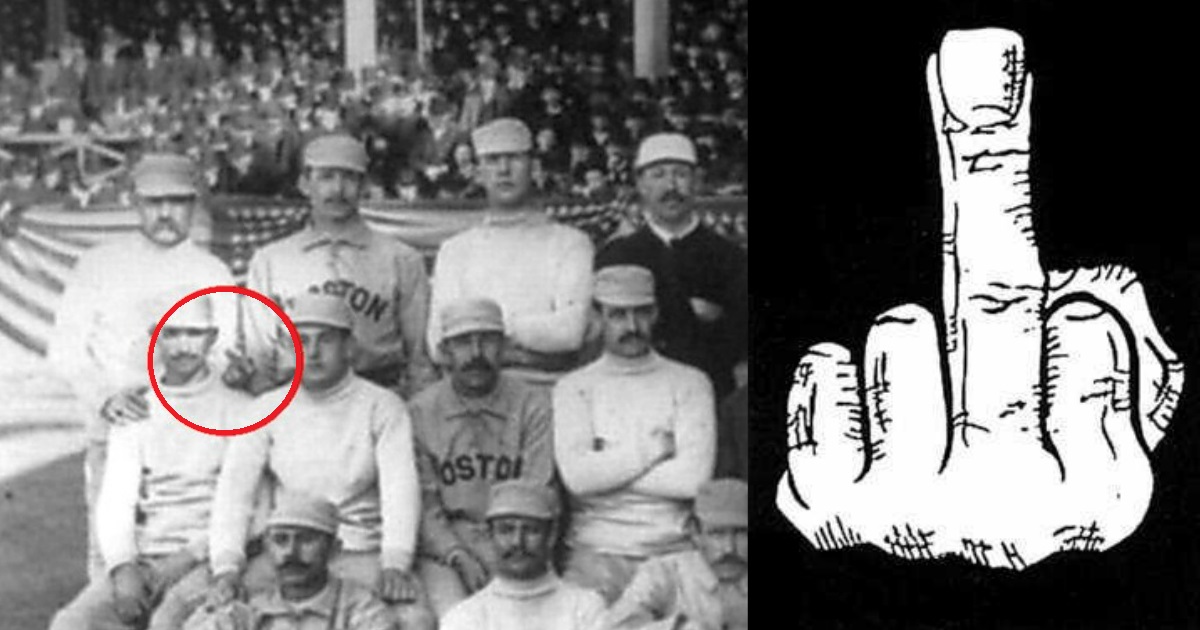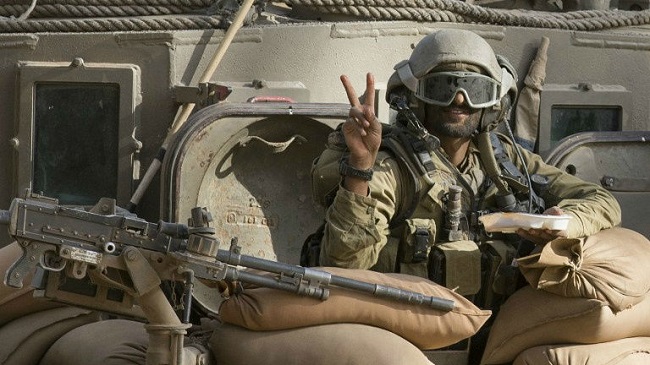


Each time you’ve shown the middle finger to someone and given an up yours sign, have you ever wondered who did it first. Or even the thumbs up sign and V for victory. All these signs have interesting origins. Here are the origins of ten hand gestures.

Image Source: www.huffingtonpost.in
Earlier, V for Victory meant a derogatory gesture until a Belgian politician began to request people to use the letter V for victory as a symbol of the resistance. In a BBC broadcast on January 1941, he explained how Vrijheid mean freedom in Dutch and Victoire meant victory in French
The V for victory sign signified by the first two fingers shaped in a V is generally used for peace or victory but it could also have different meanings depend on the country or culture. For example in Britain and commonwealth nations, The V was considered an offensive gesture that translated into “up your bum” while during the WWII it signified freedom.

Image Source: timesofisrael.com
Used by long bowmen
One legend stated that the V sign had its origins in a gesture made by longbowmen fighting in the 100 years war. When some of them were captured by the French, their index and middle finger were sliced off so that they could not operate a bow. The V sign was used by bowmen as a symbol of defiance although there is now factual source to corroborate the legend.
Image Source: www.pinterest.com
Made famous during World War II by Winston Churchill
For quite some time, the V signs with the back of the hand away from you was meant in the same context as the finger and meant “up yours”. But, because of the Belgian minister Victor de Laveelye, the sign soon turned into victory during the war. Perhaps the man who made it truly famous is Winston Churchill who without realizing it used it in the wrong context but soon began using it in the correct way to stand for victory.
Image Source: www.constantcontact.com
In ancient Rome and Greece, people regarded the middle fingers a symbol of the man’s reproductive organ and the sign was a symbol to prevent an evil eye. It was also used as an insult to people
The middle finger is one of the most common gestures used by us on a common basis. Although we have attributed many colorful interpretations to it, the middle finger in various cultures signified contempt. In ancient times, the gesture was sometimes used as symbol of intercourse or as a symbol of threat. In the 1st century, Mediterranean cultures adopted the symbol with the other two fingers as a sign of the male organ and testicles. The practice was also used as a symbol to drive away evil spirits.
Image Source: www.storypick.com
First used in a baseball match
Anthropologist Desmond Morris says that the hand gesture could have reached the US through Italian Immigrants. The first photograph showing someone using the finger was in 1886 when the pitcher for Boston Beaneaters Baseball team showed the finger to rivals, the NY Giants. One early photograph shows a team member showing it to the cameraman.
Image Source: www.historybyzim.com
This gesture originated when a Hawaiian called Hamana Kalili suffered a sugar mill accident in which he lost three of his fingers. His wave of the thumb and pinkie denoting the all clear evolved into the shaka which was imitated by kids too. The Shaka sign is used to signify an attitude of hanging loose associated mainly with surfing communities in Hawaii. It slowly spread around the world as an expression of greeting or gratitude.
Image Source: www.videoblocks.com
Used by whalers
The origin of the shaka are explained by other theories such as one which says that Spanish immigrants would usually fold three middle fingers and bring the thumb to their mouths to express a friendly gesture with the Hawaiians. One theory says that whalers were the first ones to use shakas when they had to signal they had found a catch.
It is Lippy Espinda who is credited with the creation of the shaka for using the sign extensively in his ads and though it may not be regarded by some, it is a wide known fact that he has increased the popularity of the gesture.
Image Source: www.totalsup.com
The handshake was used in ancient Greece as a method to make sure the other person wasn’t carrying a concealed weapon. BY clasping hands, it made both sure there was no weapon and the shaking was meant to shake out any weapons carried in ones sleeve. Texts and paintings as far back as the 5th century depict people and soldiers shaking hands.
Moreover, since weapons weren’t used by the left hand, only the right hand was shaken. Soon this gesture evolved into a symbol of trust and greeting to show each other no harm was intended towards each other.
Image Source: factsc.com
In the 1800, professional boxers started imitating the way they touched gloves as the standard greeting before a boxing match. The bump was evolved from the handshake perhaps because of the restriction of gloves. In cricket too, the bump is used extensively as a gesture of celebration.
Smithsonian scholar LaMont Hamilton believed that the gesture developed during the Vietnam War and was modified from the fist salute used by the Black Panther group for black power. The salute was banned by the armed forces. The first bump in cricket was observed when Australian batsmen Bob Minney and Mick Tyler bumped each other’s fist after the first over during a game played in September 1990.
Image Source: mentalfloss.com
This was regarded as a superstitious gesture used in rock concerts to ward of the evil eye. Ronnie James Dio lead singer of the Black Sabbath was the man who popularized the symbol in heavy metal music saying he learnt it from his Italian grandmother. At music concerts, you may notice the horn sign being made quite a lot.
Image Source: www.newyorkupstate.com
First used by the Coven in 1969
Ronnie thought the sign would also go well with the bands ideology in comparison to the double peace sign made popular by former lead singer Ozzy Ozbourne. However the first band to make the horn sign was the Coven in 1969 that drew their inspiration from cult figures and Satanists like Anton LaVey who used the sign as a symbol of the Devil.
Image Source: www.youtube.com
The first high five was observed between teammates Dusty Baker and Glen Burke of the LA Dodger teammates. After his 30th homerun of the season on 2nd October 1977, Baker met Burke with his hand held over his head and that was slapped by Baker. Who said it was the right thing to do.
However there is also an interesting anecdote to the story where Burke came out publicly in 1982 saying he was gay. As a gay activist, he repeatedly used the high five as a symbol for gay pride.
Image Source: www.fastcompany.com
The salute has its origins in medieval France when Knights would greet each other by raising their visors. In the military, juniors would take off their headgear in the presence of superiors. But because of the cumbersome task of taking ones head gear off several times a day, as well as the heavy head gear of the 18th and 19th century, the act evolved to a shorter version of simply touching the head gear as a sign of respect and salutation.
Image Source: www.rd.com
This actually dates back to Ancient Rome during the events in the circus namely the gladiator fights which would end in a gladiator’s life being spared or not. Contrary to what you believe and what you see in movies, the thumbs up sign did not mean the loser would be spared. It meant an approval of death and the thumbs down sign meant that the winner should lower his sword. Sparing the gladiator was signified by a closed fist instead with the thumb wrapped around it. Today the Thumbs up sign is widely used as a sign of approval or ‘everything’s ok’ or “checked”.
Image Source: www.italymagazine.com
The hand gesture of keeping your fingers crossed for good luck originates to the pre Christian era when a cross was formed with two index fingers to make wish. It evolved into the crossing of two fingers of the same hand. The concept was a pagan belief that good spirits would live in symbols of crosses and by making such a symbol with the fingers would invoke the positivity and blessings of such spirits. The custom is now a secular one performed to keep bad luck at bay.
Image Source: www.skipprichard.com